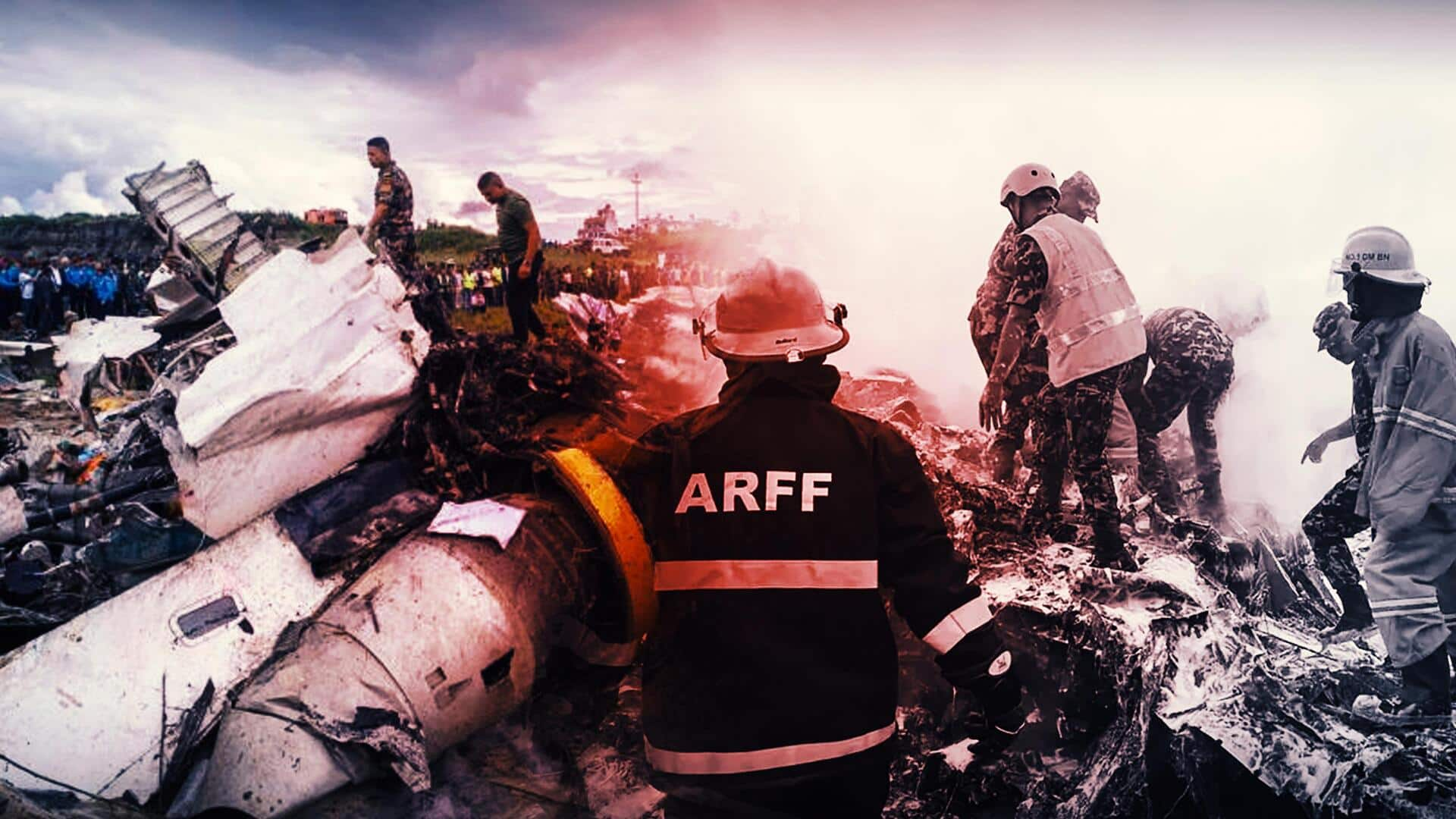
Kathmandu plane crash: Why Nepal has poor aviation safety record
What's the story
A Bombardier CRJ200 aircraft owned by Saurya Airlines crashed during takeoff on Wednesday morning at the Tribhuvan International Airport in Kathmandu, Nepal. The crash claimed the lives of 18 people onboard, including two crew members and 17 technicians who were en route to Pokhara for maintenance checks. Pilot Manish Shankya was the sole survivor and is currently receiving treatment for a head injury at a nearby hospital. Here's what we know about the accident and Nepal's aviation safety record.
Crash sequence
Aircraft veered off runway
The Civil Aviation Authority of Nepal (CAAN) reported that the aircraft took off at 11:11am (Nepal Standard Time). According to CAAN's press release, "Shortly after takeoff from runway 02, the aircraft veered off to the right and crashed on the east side of the runway." Eyewitness accounts and online videos confirm this sequence of events, showing the plane flipping after its wing-tip hit the ground during takeoff and immediately catching fire before plunging into a gorge.
Crash cause
Cause of crash unclear
The exact cause of the crash remains undetermined. Some aviation experts suggest a "climb failure" may be responsible, where the plane was unable to gain altitude after takeoff due to possible engine failure, faulty pre-flight planning, other technical issues or pilot error. An investigation is currently underway to ascertain the precise cause of the accident
Safety concerns
Nepal's aviation safety
Nepal has a notorious reputation for poor aviation safety due to factors such as challenging mountainous terrain, unpredictable weather, aging aircraft, poor infrastructure and inadequate regulatory oversight. The Geneva-based Bureau of Aircraft Accidents Archives (B3A) reports that Nepal has seen 68 aviation accidents since 1946 resulting in 900 fatalities. The Aviation Safety Network records 41 fatal accidents since 1919 with a total of 878 fatalities.
Infrastructure issues
Nepal's aging aviation infrastructure
Nepal's challenging terrain and weather conditions, coupled with a lack of investment in new planes and infrastructure, contribute to the high accident rate. The country's airstrips are often precariously placed on plateaus or cut into mountains, requiring high skill levels for landing. Many of Nepal's aircraft are aging and lack world-class maintenance. Kathmandu airport, despite having a relatively longer runway compared to other Nepalese airports, is surrounded by high mountains on all sides, making it a challenging location for pilots.